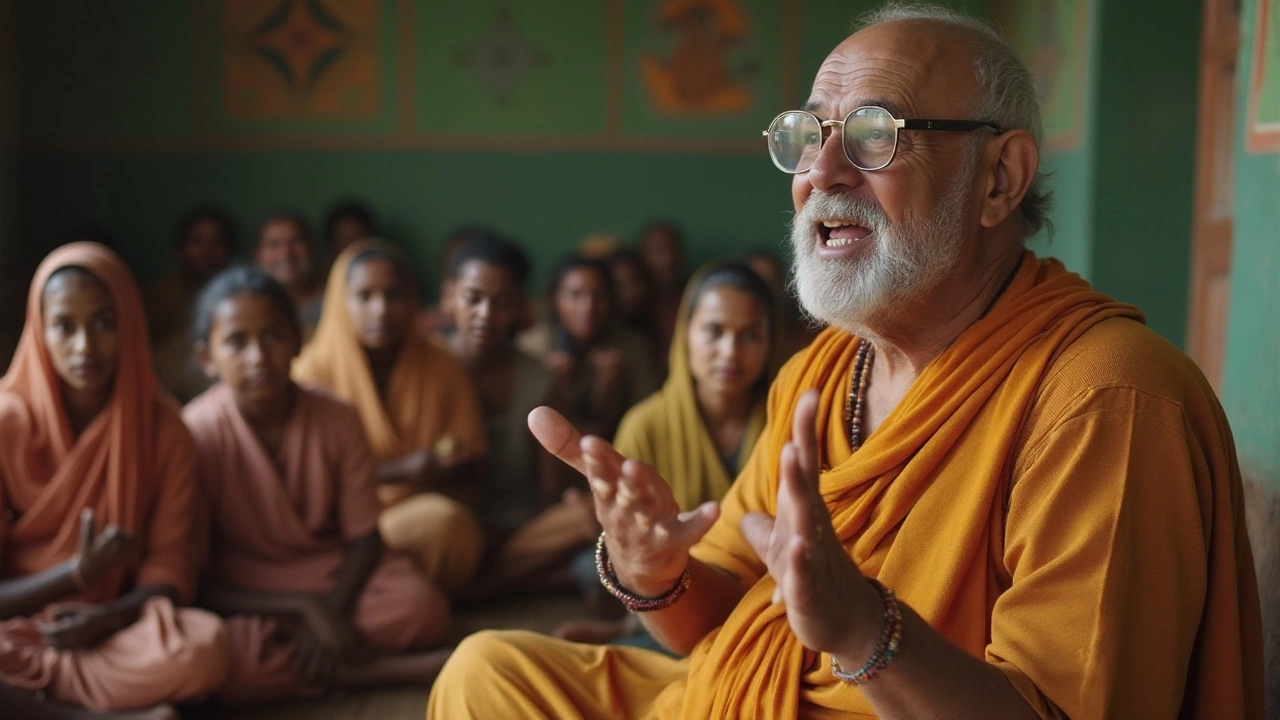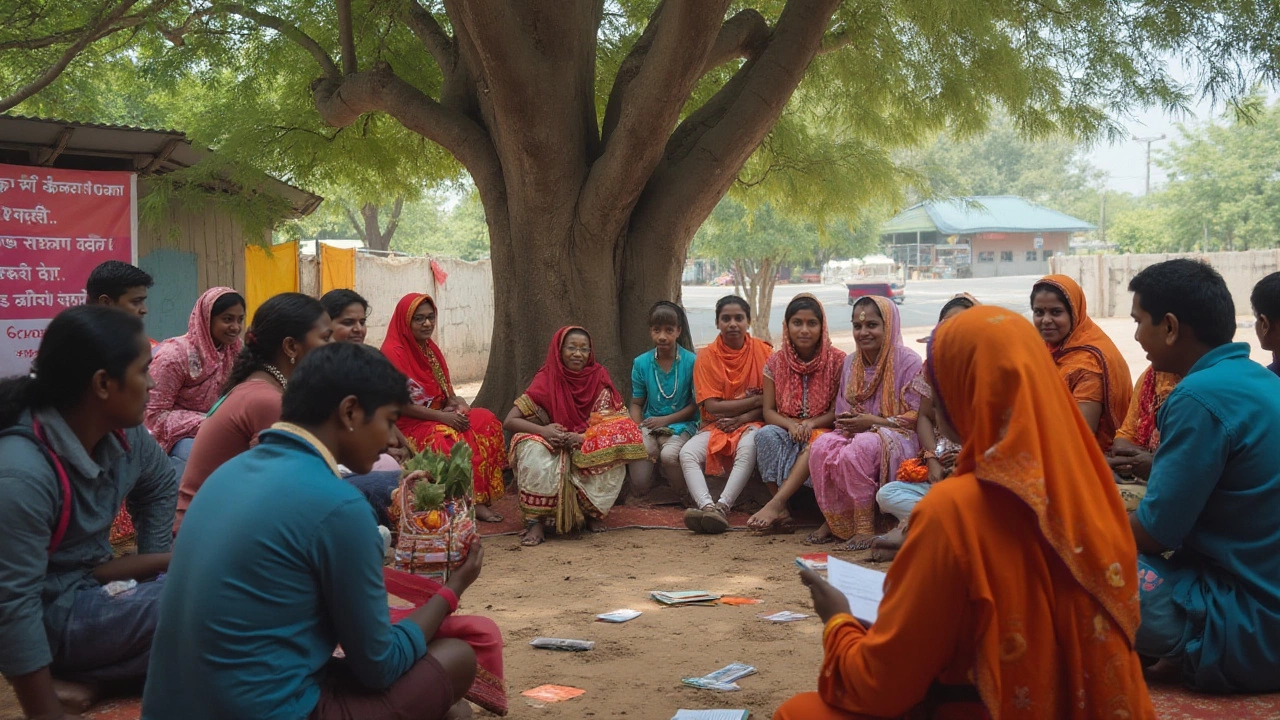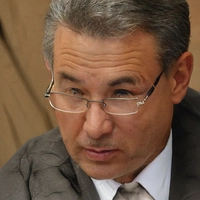When it comes to bridging gaps and fostering understanding, successful community outreach programs serve as the beating heart of connection. These initiatives are not just about delivering services but cultivating relationships that enrich both the service providers and recipients.
At their core, effective outreach efforts are rooted in a deep understanding of the communities they serve. It's a journey that involves more than just addressing surface-level needs. Engaging with these communities means having your finger on the pulse of their unique challenges and hopes.
Crafting successful strategies entails setting clear and achievable goals, ensuring that every move made aligns with the broader mission. Forming strong partnerships can amplify the reach and effectiveness of these programs. By weaving local voices into the fabric of outreach, teams can draw upon diverse strengths and perspectives.
- Understanding Community Needs
- Setting Measurable Objectives
- Building Partnerships
- Engaging Volunteers
- Cultural Sensitivity and Adaptation
- Evaluating and Sustaining Efforts
Understanding Community Needs
At the heart of any successful community outreach program lies a comprehensive understanding of the community itself. This foundational step ensures that the efforts are targeted and meaningful. Engaging deeply with community members often begins with a commitment to listening and learning. It requires venturing beyond the surface-level statistics to capture the essence of what truly moves the community. It's akin to becoming a part of the environment, understanding subtle cultural nuances, precious local traditions, and everyday challenges that are often overlooked. This step sets the stage for authentic engagement, as unearthing these insights helps tailor initiatives that resonate on a personal level.
One valuable approach to gathering this insight is through community surveys and focus groups. Conducting discussions in small, focused settings can encourage participation and uncover diverse perspectives. Surveys, ideally co-created with community representatives, provide quantifiable data that bridges the gap between perception and reality. This blending of qualitative and quantitative data offers a broader picture, paving the way for informed decision-making. On this note, it's important to remember that open communication is essential. Many outreach programs have found success by facilitating ongoing dialogue, where feedback loops ensure the community's voice continuously shapes the program's direction. This feedback is a lifeline that keeps the initiative relevant and impactful.
"Understanding a community is not a one-time effort; it's an ongoing commitment," said sociologist Dr. Emma Carter. "The most successful outreach programs are those that grow and evolve in concert with the communities they serve."
There are also technological tools available to assist in understanding community dynamics. Mapping software, for instance, can visualize geographic data, revealing patterns that might not be apparent from ground-level observations. Such visual tools can pinpoint areas of need, areas that are under-resourced, and even potential community leaders who can assist with outreach. These insights often shine a light on systemic issues that require a more stratified approach to remedy.
Another layer of understanding involves addressing potential barriers to engagement, such as language differences, accessibility issues, or historical mistrust. Recognizing these barriers and working to mitigate them opens the door to authentic community involvement. Bilingual information sessions or addressing past grievances head-on can turn hesitant participants into active collaborators. This kind of respectful engagement honors the community’s history, which often holds the key to effective outreach strategies.
Setting Measurable Objectives
Embarking on a community outreach mission without defined objectives is like setting sail without a compass—there's no telling where you'll end up. Establishing measurable objectives forms the foundation of any successful outreach program. When these objectives are clear, they provide a roadmap, guiding efforts and ensuring that all resources are utilized effectively. A well-defined objective not only helps in maintaining focus but also aids in evaluating the program's success. To start, it's crucial to align objectives with the broader mission of the organization. This ensures that every minor milestone contributes to the greater goal, creating a sense of direction and purpose for the team involved.
Specificity is key when setting these goals. The more detailed the objectives are, the easier it becomes to measure progress. For instance, instead of aiming to 'increase community engagement,' aim for a target like 'increase monthly community meeting attendance by 20% within six months.' This clear target allows teams to not only measure progress but adjust strategies as needed. Objectives should include qualitative and quantitative elements to paint a comprehensive picture of success. A commonly used framework for setting objectives is the SMART criteria. This ensures that objectives are Specific, Measurable, Achievable, Relevant, and Time-bound. Each element plays a critical role in helping teams stay on track and achieve desired outcomes.
Moreover, setting measurable objectives requires a deep understanding of the community's baseline metrics. Conducting surveys, interviews, and focus group discussions can offer valuable insights into the community's current standing and needs. These metrics help in setting realistic and achievable goals that resonate with the community's priorities. It's essential to continually revisit these objectives throughout the program’s lifecycle. This check helps to evaluate what is working and what might need recalibration. An adaptable mindset allows outreach programs to shift focus if needed, ensuring that the core objective is always in sight.
"By failing to prepare, you are preparing to fail." — Benjamin Franklin
Sometimes, sharing these objectives with the community can further enhance engagement and accountability. When community members are aware of the goals, they feel more involved and are likely to provide active support in achieving them. Transparency in goals fosters trust and collaboration, vital ingredients in any outreach initiative. It's worth mentioning that the success of setting measurable objectives also lies in testing different approaches to see what works best for a particular community. Outreach leaders should be bold and innovative, using creative methods to engage with their audience. This proactive experimentation enriches the learning process, providing new insights and strategies for setting even more effective objectives in future endeavors.

Building Partnerships
Establishing and nurturing partnerships is a core pillar of any successful community outreach program. It's about weaving a network of support that not only strengthens an initiative but also roots it firmly within the community fabric. Such partnerships can range from collaborations with local non-profits, engagement with businesses eager to give back, and educational institutions seeking practical service-learning opportunities. A rich tapestry of connections can multiply the impact of your efforts, reaching corners previously inaccessible. For instance, local businesses might offer resources or even volunteer services, while schools might provide eager students ready to learn about community duties. These partnerships are reciprocal arrangements that allow all involved to flourish.
The first consideration when forming these alliances is identifying potential partners who share similar goals and values. A community outreach endeavor should reflect the essence of those it aims to assist, and the most seamless way to achieve this is through partnerships with stakeholders who already hold a significant stake in the community's well-being. Collaboration with local leaders and respected figures can lend credibility to an initiative, paving the way for smoother implementation. Take, for example, the partnership between Feeding America and local food banks across the nation, which highlights how collective efforts can address hunger in individualized ways. As Vikki Escarra, a prominent figure in the non-profit sector, once said,
"Collaboration is the cornerstone of success in community efforts, turning visions into tangible change."
A key aspect of successful partnerships is maintaining open, honest communication. Engaging partners in consistent dialogue ensures everyone is aligned on objectives and strategies. It's equally important to establish clear roles and expectations from the onset. This clarity helps prevent misunderstandings and fosters a sense of mutual respect and commitment. Regular check-ins and updates help keep all parties informed and motivated. Utilize digital tools for coordination and feedback, thereby ensuring engagement remains strong even with limited face-to-face interactions. Importantly, remember to celebrate successes along the way. Acknowledging achievements not only boosts morale but reinforces why the partnership began. It's this dedication to maintaining healthy relationships that ultimately breeds ongoing support and successful outreach strategies.
Innovative partnerships can also bring unexpected benefits to a community outreach initiative. By thinking creatively about whom to approach, programs can access unique resources and perspectives. Consider partnerships with tech companies, for instance; these can provide invaluable digital expertise or tools that elevate the outreach's capacity. McKinsey & Company's study on non-profit partnerships emphasized that organizations demonstrating flexibility in their collaborations could enhance their operational effectiveness by an impressive 30%. By tapping into various industries and sectors, outreach programs can forge a robust, interconnected community network resilient to future challenges. The magic truly happens when diverse sectors unite under a common goal—an endeavor far greater than the sum of its parts.
Engaging Volunteers
In the world of community outreach, volunteers serve as the backbone of many successful programs. These individuals bring not only their time but also diverse skills and perspectives that can significantly enhance the effectiveness of outreach projects. Engaging volunteers involves more than just drafting individuals to fill roles; it calls for fostering an environment where their contributions are valued and their skills are effectively utilized. Effective engagement ultimately boosts the morale and energy of the entire outreach program, creating a ripple effect that benefits the community as a whole. Volunteering can provide a sense of purpose and fulfillment for individuals, and by matching volunteers with roles that align with their passions and expertise, organizations can maximize these benefits.
A strategic approach to engagement includes providing clear communication about the objectives and importance of their roles. Volunteers must understand the impact they are making, both for the program and for themselves, to maintain motivation and commitment. This can be achieved through regular updates, training sessions, and informal meet-ups that foster a sense of community and belonging among volunteers. Studies have shown that volunteers who feel connected to their work and acknowledged for their efforts are more likely to continue their involvement over time. For instance, a report from the Volunteer Management Program indicated that retention rates increased by approximately 60% when volunteers were regularly appreciated and involved in decision-making processes.
The process of engaging volunteers also includes offering growth opportunities. Volunteers appreciate learning new skills and gaining experiences that could benefit them professionally and personally. Offering workshops, leadership roles, or even scholarships for further education can be excellent ways to enhance volunteer experiences. Moreover, allowing volunteers to take on leadership positions within the program can empower them and foster a sense of ownership and responsibility. It transforms a volunteer position into something more substantial, often leading to innovative ideas and improvements within the program itself. According to a recent survey, 74% of volunteers reported that skill development and new opportunities were key motivators for their involvement.
One more crucial aspect of volunteer engagement involves tapping into the power of storytelling. By sharing stories of how volunteer efforts have made tangible changes, organizations can ignite a greater sense of pride and purpose. These stories not only serve as morale boosters but also as powerful recruitment tools, illustrating the real-world impacts of the outreach efforts. Consider the words of Dr. Martin Luther King Jr., who said, "Everybody can be great because everybody can serve." Such quotes encapsulate the spirit of volunteerism, encouraging not only current volunteers but also inspiring potential volunteers to step forward and join in making a difference. Ultimately, the engagement of volunteers should not be seen as a one-sided effort but as a partnership that nurtures growth and transformation for everyone involved.

Cultural Sensitivity and Adaptation
Recognizing and respecting the diverse fabric of the communities we aim to engage is not merely a consideration; it's a fundamental necessity for any thriving community outreach. Embracing cultural sensitivity starts with acknowledging the varied backgrounds, traditions, and values that characterize these communities. This means actively listening and observing, rather than simply prescribing solutions based on preconceived notions. Listening is the cornerstone of understanding, setting the stage for meaningful engagement where the cultural nuances of a community are valued and respected.
One practical approach is to employ community liaisons or cultural consultants who are already embedded within the target group. These individuals can provide invaluable insights into local customs and preferences, ensuring that outreach initiatives are not just reaching the community but resonating with them deeply. They help in translating ideas into culturally appropriate actions and messages that speak the community's language, both literally and figuratively. Their insider perspective can often unveil the subtleties outsiders may overlook, providing a bridge for effective dialogue.
For example, a very successful health campaign in a multicultural district of Sydney sought input from cultural leaders before launching their initiative. The leaders provided guidance on how to frame health messages in culturally relevant terms, ultimately improving community response and participation rates. This approach highlights the importance of humility and flexibility in shaping outreach programs. "Designing for one community doesn't work for another," observed cultural strategist Juanita Ríos, emphasizing the uniqueness of each community's fabric. Negotiating these differences with grace and adaptability is not only respectful but critical for trust-building.
It's also crucial for outreach initiatives to remain adaptive. Communities are not static; cultural trends evolve, and so must the strategies employed. Regularly revisiting these strategies ensures they remain relevant, adjusting to both the community's changing needs and any shifts within the organization itself. Adopting a mindset of continuous learning encourages growth and keeps the program dynamic and responsive. Such flexibility allows organizations to pivot quickly, experimenting with different approaches that may resonate better over time.
The importance of cultural sensitivity in successful outreach programs is underscored by their commitment to inclusivity. This commitment is reflected in everything from program materials—which might need translation into multiple languages—to how services are delivered, ensuring they align with cultural practices and holidays. It's about creating an environment where diversity isn't just acknowledged but celebrated, providing avenues for all voices to be heard. This celebration of diversity enriches the outreach program, infusing it with authenticity and greater acceptance within the community it aims to serve.
A study conducted by the Pew Research Center found that organizations that regularly incorporated cultural adaptability scored higher in community trust ratings. This trust is not easily earned but is immensely valuable, offering a solid foundation from which other initiatives can be launched successfully. Trust is both the starting point and the goal of community engagement, forming the bedrock upon which long-term relationships are built. Fostering these relationships begins by placing cultural sensitivity at the core of outreach strategy, thereby ensuring each initiative not only reaches the target population but connects with them meaningfully.
Evaluating and Sustaining Efforts
To ensure the longevity of community outreach programs, it’s crucial to not only measure their impact but also seek ways to sustain their momentum. Evaluation should be more than a routine checklist process; it needs to be an opportunity for the program to learn, grow, and become more effective. By periodically assessing the outcomes, organizations can identify strengths and areas for improvement, ensuring that they continue to meet the ever-evolving needs of the community. Success metrics could include the number of individuals reached, the frequency of engagement, and the tangible outcomes seen within the community. Regular reports generated from these evaluations can guide future planning and resource allocation, directly impacting the outreach’s success.
Another equally important aspect is the sustainability of these outreach efforts. When a program is crafted, thinking long-term can be a game changer. Finding a consistent funding source is critical, yet equally significant is the need to build a resilient framework that can adapt to changing circumstances. This involves establishing partnerships with other organizations, leveraging both human and financial resources efficiently, and maintaining a robust volunteer network. Volunteers often feel a sense of ownership and commitment, which can be a vital component in sustaining a program. Practically, this could mean setting up training programs to keep volunteers engaged and informed, recognizing their contributions, and continuously incorporating their feedback into the program structure.
An interesting point to consider is the role of data and technology in evaluating and sustaining efforts. With advancements in technology, collecting and analyzing data has never been easier. Organizations could invest in affordable data analysis tools to assess the program outcomes rather than relying solely on anecdotal evidence. This data-driven approach facilitates more informed decision-making and allows for real-time adjustments as needed. For example, suppose data shows that some outreach strategies are outperforming others. In that case, resources can then be reallocated to amplify those efforts, ensuring greater efficacy and impact over time.
Programs should also prioritize transparent communication within their teams and with the community they serve. This fosters trust and makes the evaluation process holistic and inclusive. A quote from Peter Drucker, the renowned management consultant, may come to mind:
"What gets measured gets managed."By embracing this philosophy, outreach workers can continuously refine their efforts to ensure the program remains relevant and successful.
Regular community feedback sessions can enhance program evaluation and sustainability. By incorporating direct input from those served, programs can remain aligned with community priorities. This not only helps in validating the outreach’s objectives but also strengthens the bond between the community and the organization. Creating these feedback loops ensures that outreach strategies remain elastic and community-centric, adapting to the needs as they evolve. This not only invigorates the program but also empowers communities to have a stake in their development, thereby fostering an atmosphere of collaborative growth.





